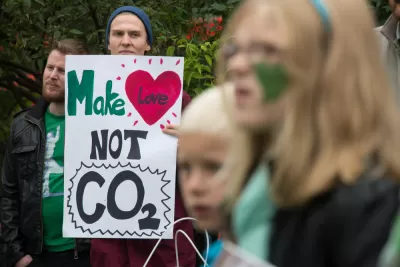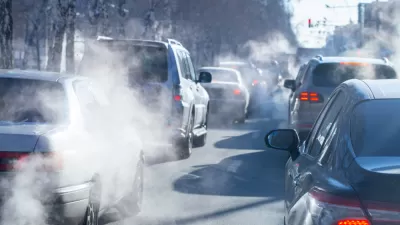The U.S. is exceptional when it comes to carbon emissions—that much is indisputable.

Umair Irfan boosts the signal on a report published in April by Carbon Brief, which calculated the cumulative carbon emissions of every country since 1750.
"What’s abundantly clear," according to Irfan's explanation of the Carbon Brief's analysis, "is that the United States of America is the all-time biggest, baddest greenhouse gas emitter on the planet."
The Carbon Brief team also created a graph that tracks each country's carbon output since 1750.
Animation: The countries with the largest cumulative CO2 emissions since 1750
Ranking as of the start of 2019:
1) US – 397GtCO2
2) CN – 214Gt
3) fmr USSR – 180
4) DE – 90
5) UK – 77
6) JP – 58
7) IN – 51
8) FR – 37
9) CA – 32
10) PL – 27 pic.twitter.com/cKRNKO4O0b— Carbon Brief (@CarbonBrief) April 23, 2019
For more topical assessment of the world's current carbon emissions, see the "Global Carbon Budget" released this week by the Global Carbon Project, which finds the world's carbon emissions reaching a new high in 2019. The United Nations also last week released a report pinning much of the blame for climate change on the 20th century history of land use and transportation planning in the United States.
FULL STORY: Why the US bears the most responsibility for climate change, in one chart

Trump Administration Could Effectively End Housing Voucher Program
Federal officials are eyeing major cuts to the Section 8 program that helps millions of low-income households pay rent.

Planetizen Federal Action Tracker
A weekly monitor of how Trump’s orders and actions are impacting planners and planning in America.

Ken Jennings Launches Transit Web Series
The Jeopardy champ wants you to ride public transit.

California Invests Additional $5M in Electric School Buses
The state wants to electrify all of its school bus fleets by 2035.

Austin Launches $2M Homelessness Prevention Fund
A new grant program from the city’s Homeless Strategy Office will fund rental assistance and supportive services.

Alabama School Forestry Initiative Brings Trees to Schoolyards
Trees can improve physical and mental health for students and commnity members.
Urban Design for Planners 1: Software Tools
This six-course series explores essential urban design concepts using open source software and equips planners with the tools they need to participate fully in the urban design process.
Planning for Universal Design
Learn the tools for implementing Universal Design in planning regulations.
Ada County Highway District
Clanton & Associates, Inc.
Jessamine County Fiscal Court
Institute for Housing and Urban Development Studies (IHS)
City of Grandview
Harvard GSD Executive Education
Toledo-Lucas County Plan Commissions
Salt Lake City
NYU Wagner Graduate School of Public Service




























